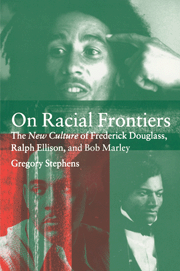Critical Mixed Race Studies ConferencePosted in Arts, Asian Diaspora, Canada, Census/Demographics, History, Identity Development/Psychology, Literary/Artistic Criticism, Live Events, Native Americans/First Nation, New Media, Papers/Presentations, Politics/Public Policy, Social Science, United States, Women on 2010-10-26 23:40Z by Steven |
Critical Mixed Race Studies Conference
DePaul University, Lincoln Park Campus
DePaul University Student Center
2250 N. Sheffield
Chicago, Illinois USA 60614
2010-11-05 through 2010-11-06
Sponsored by DePaul University Asian American Studies and Latin American and Latino Studies and co-sponsored by the College of Ethnic Studies at San Francisco State University and the MAVIN Foundation.
“Emerging Paradigms in Critical Mixed Race Studies,” the first annual Critical Mixed Race Studies Conference, will be held at DePaul University in Chicago on November 5-6, 2010.
The CMRS conference brings together scholars from a variety of disciplines nationwide. Recognizing that the diverse disciplines that have nurtured Mixed Race Studies have reached a watershed moment, the 2010 CMRS conference is devoted to the general theme “Emerging Paradigms in Critical Mixed Race Studies.”
Critical Mixed Race Studies (CMRS) is the transracial, transdisciplinary, and transnational critical analysis of the institutionalization of social, cultural, and political orders based on dominant conceptions of race. CMRS emphasizes the mutability of race and the porosity of racial boundaries in order to critique processes of racialization and social stratification based on race. CMRS addresses local and global systemic injustices rooted in systems of racialization.
Fanshen Cox, Tiffany Jones, and myself will participate in a Greg Carter (University of Wisconsin, Milwaukee) moderated round-table discussion titled “Exploring the Mixed Experience in New Media” on 2010-11-05 from 10:15 to 12:15 CDT at the conference.
View the finalized schedule here.
Organizers:
Wei Ming Dariotis, Assistant Professor Asian American Studies
San Francisco State University, IPride Board
dariotis@sfsu.edu
Camilla Fojas, Associate Professor and Chair
Latin American and Latino Studies
DePaul University
Laura Kina, Associate Professor Art, Media and Design and Director Asian American Studies
DePaul University



